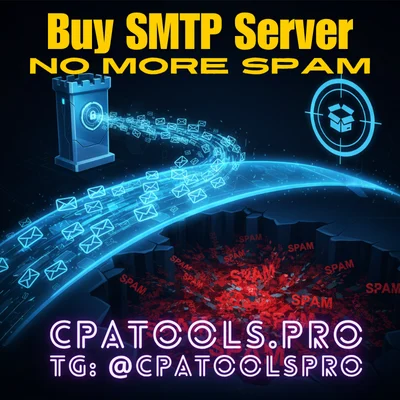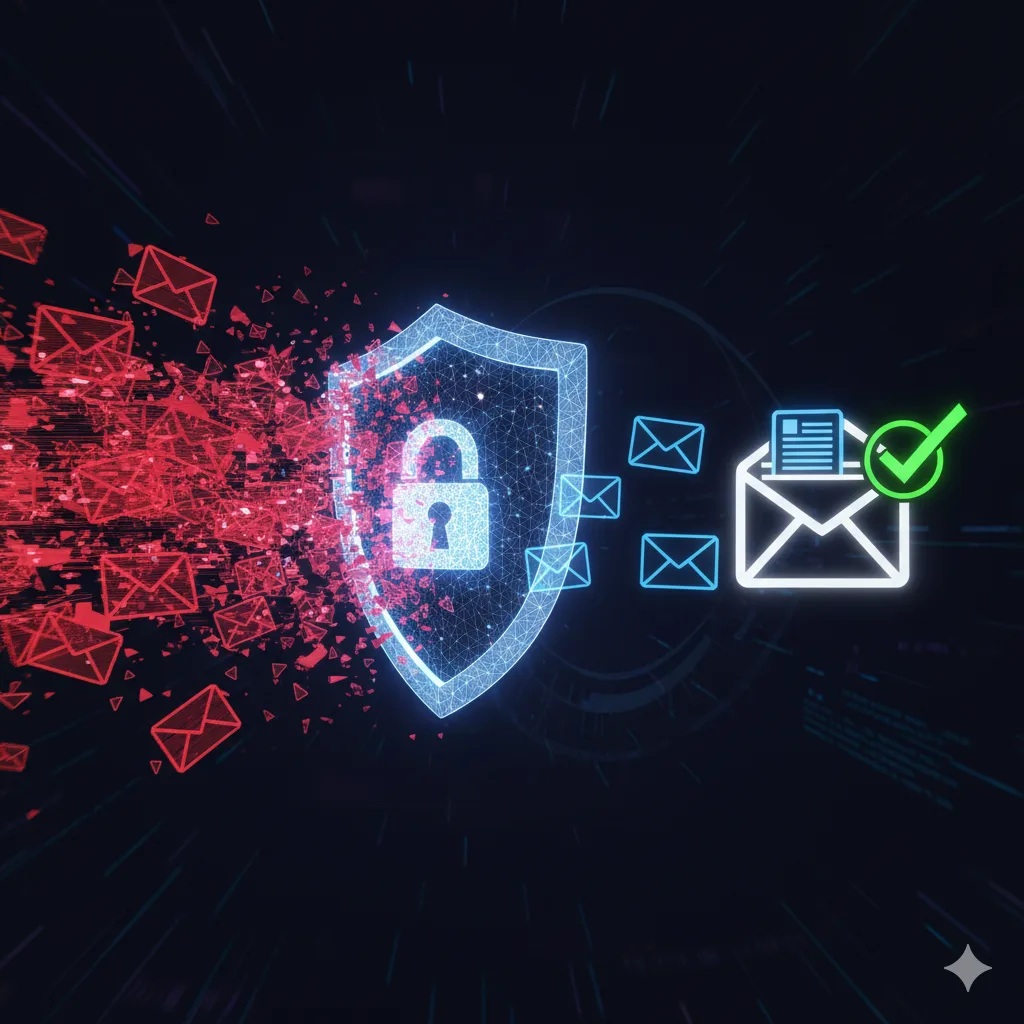Imagine this: you’ve just spent a week crafting the perfect product launch campaign. The copy is compelling, the graphics are stunning, and your email list is ready. You hit “send,” anticipating the flood of new sales… but it never comes. A knot forms in your stomach as you check your reports and discover a horrifying deliverability rate. The vast majority of your emails landed in the one place no marketer ever wants to see: the spam folder. Sound familiar? Frankly, this is a scenario that plays out every single day. The problem often isn’t your email; it’s the weak, unreliable delivery engine you’re using.
When you decide to buy an SMTP server, you’re not just buying a piece of software; you’re investing in a private, high-speed highway for your emails. You’re taking control of your sender reputation to ensure your messages reach the inbox. This guide is your complete roadmap. We’ll go beyond the basics to cover everything from choosing the right SMTP hosting to advanced setup and monitoring. By the end, you’ll feel confident and empowered to acquire the right bulk email server for your needs.
Table of Contents
ToggleThe Foundation: What Is an SMTP Server and Why Do You Actually Need One?
Let’s start at the beginning, because understanding the “why” makes the “how” so much clearer. SMTP stands for Simple Mail Transfer Protocol. At its core, it’s the universal standard that email servers use to send messages across the internet, as defined by technical documents like RFC 5321. Think of it as the engine of the email world. When you hit “send,” your email client hands the message to an SMTP server, which then acts like a smart postal worker, relaying it until it lands safely in the right mailbox.
Why Your Business Needs a Professional Email Delivery Service
So, if everyone already uses SMTP, why would you need to buy an SMTP mail server? The answer comes down to limitations and reputation. The free SMTP server that comes with your web hosting plan is a shared resource. You’re on the same “digital street address”—the same IP—as thousands of other users. If just one of those users sends spam, it damages the reputation of the shared IP for everyone. As a result, email providers start flagging your perfectly legitimate emails as suspicious.
Warning: Using a shared hosting SMTP for bulk email is one of the fastest ways to get your domain’s sending reputation blacklisted by services like Spamhaus.
When you buy a bulk SMTP server, you step away from that crowded, unpredictable environment. You gain control over your deliverability, can send millions of emails without hitting a limit, and get access to the advanced authentication that proves you’re a legitimate sender. In short, it’s the difference between shouting into a crowded room and having a direct, private line to your customers.
The First Big Decision: Choosing the Right Type of SMTP Solution
Once you’ve decided to make the leap, you’ll quickly discover that not all SMTP servers are created equal. It’s a bit like deciding between renting an apartment and buying a house. Let’s break down the main options you’ll encounter when you’re ready to purchase an SMTP server. Getting this choice right from the start will undoubtedly save you a world of headaches.
Option 1: The User-Friendly SMTP Relay Service
An SMTP Relay Service is like renting a high-end, fully-furnished apartment. You don’t manage the server yourself. Instead, you sign up with a provider (like SendGrid or Mailgun) and they give you credentials to use their highly optimized infrastructure. You get the benefits of their excellent IP reputations and pre-configured authentication without touching a single line of server code. Consequently, this is the perfect SMTP solution for businesses that want reliable email sending for their website or app without the technical overhead.
Option 2: The Powerful Dedicated SMTP Server
On the other hand, a Dedicated SMTP Server is like owning your own house. You rent a server that is dedicated entirely to your email sending, giving you full control over the software, configuration, and IP address. This option offers the highest level of performance and customization. The best site to buy SMTP solutions, like CPATools, often provides these powerful, managed servers to give you full control. This is the choice for high-volume senders and marketing agencies who need unparalleled control over their email destiny.
Under the Hood: The Non-Negotiable Technical Features
Alright, let’s get into the weeds. When you’re comparing services, you’ll encounter a lot of technical jargon. But there are a few core features that are absolutely non-negotiable. These are the foundational pillars of good email deliverability. Ignoring them is like building a house with no foundation.
IP Reputation and Server Warming
Your IP Address Reputation is your digital passport. A dedicated IP address is a must-have, as it means your sender reputation is 100% in your control. But just having a dedicated IP isn’t enough. So what’s the secret? A prewarmed SMTP server. A new IP has no sending history, which email providers view with suspicion. A provider warms up a prewarmed IP by gradually sending emails, building a positive history. This ensures you can achieve high inbox placement from day one. (Note: You can learn more in our detailed guide to IP warming here!)
Email Authentication (SPF, DKIM, DMARC)
This is how you prove you are who you say you are. These three protocols are non-negotiable:
- SPF (Sender Policy Framework): A DNS record that lists all IP addresses authorized to send email from your domain.
- DKIM (DomainKeys Identified Mail): Adds a tamper-proof digital signature to every email, proving it wasn’t altered.
- DMARC (Domain-based Message Authentication): Ties SPF and DKIM together and tells servers what to do with unauthenticated emails. For a definitive guide, visit the official resource at dmarc.org.
The Danger Zone: Red Flags and Services to Avoid
The internet is a bit like the Wild West. For every legitimate provider, there are dozens of shady operators. Therefore, when you’re looking to buy cheap SMTP, you have to be incredibly careful.
The most obvious red flag is any service that allows you to buy an SMTP server for spamming. Sending unsolicited bulk email is illegal under laws like the CAN-SPAM Act and will destroy your brand’s reputation. Furthermore, be on high alert for terms like “hacked SMTP for sale.” These are scams selling access to compromised servers that will be shut down without warning. A proper SMTP purchase is an investment in professional, ethical infrastructure.
Your First Steps After Purchase: A Quick-Start Guide to Success
Congratulations! You’ve done your research and you’re ready to buy SMTP online. Now that you have your credentials, what’s next? Let’s walk through the crucial first steps to ensure a smooth launch.
1. Configure Your DNS Records
This is how you authorize your new server to send email for your domain. You’ll need to add SPF and DKIM records to your domain’s DNS manager. They will look something like this:
v=spf1 ip4:192.168.0.1 -all
(Note: Your provider will give you the exact values to copy and paste.)
2. Follow a Cautious IP Warm-Up Schedule
Don’t send 100,000 emails on day one! You need to build your reputation gradually. A simple warm-up schedule might look like this:
- Day 1-3: 50-100 emails/day to your most engaged subscribers.
- Day 4-7: 500-1,000 emails/day.
- Week 2: Double your sending volume every 3-4 days.
- Week 3-4: Continue ramping up until you reach your target volume.
Pro Tip: Many high-quality providers, like SendGrid, offer detailed guides on the IP warming process. Following their advice is crucial.
3. Monitor Your Key Metrics
Once you’re sending, you need to watch your performance like a hawk. The most important metrics are:
- Bounce Rate: A high bounce rate (over 2%) signals a problem with your list quality.
- Open & Click Rates: These show how engaged your audience is.
- Spam Complaint Rate: This should be as close to zero as possible (under 0.08%).
Conclusion: Making the Smart Investment in Your Email Future
At the end of the day, navigating the world of SMTP servers isn’t about buying a tool; it’s about acquiring a foundational asset for your business. We’ve journeyed from understanding the “why” to dissecting the technical “how,” and you’re now equipped to make a truly informed decision. You know how to choose the right SMTP solution, what critical features to demand, and how to get started on the right foot.
Your email deliverability is too valuable to leave to chance. By choosing to buy an SMTP server for unlimited sending from a reputable source, you are taking direct control of your reputation and ensuring your messages have the best possible chance to be seen. The path to the inbox is paved with smart decisions, and you’re now ready to take the first step.
About the Author
Written by James Cooper – Email Infrastructure Specialist with over 10+ years of experience optimizing deliverability systems for global marketing teams. James has helped businesses achieve 99% inbox placement rates through proper DNS authentication and IP reputation management.
Reviewed and verified by CPATools Technical Team for accuracy and compliance with 2025 email standards.
Frequently Asked Questions (FAQ)
1. What is an SMTP server and why do I need one?
An SMTP server is a mail delivery system that sends your emails to recipients through the Simple Mail Transfer Protocol. Owning or renting a dedicated SMTP server ensures better inbox delivery, higher control over your IP reputation, and no shared sending risks with other users.
2. Can I use my web hosting’s free SMTP for email marketing?
Technically yes, but it’s not recommended. Shared SMTPs from web hosts often have poor IP reputations, limited sending capacity, and lack proper authentication. For reliable marketing or transactional emails, a dedicated or private SMTP server is always the better choice.
3. What’s the difference between an SMTP relay and a dedicated SMTP server?
An SMTP relay is a managed service (like SendGrid or Mailgun) that handles sending for you, while a dedicated SMTP server gives you complete control over your software, domain reputation, and sending volume. Relays are easier to use, but dedicated servers offer more flexibility for scaling and customization.
4. How do I warm up a new SMTP IP address?
Start by sending small batches of emails to engaged contacts (e.g., 50–100 per day), then gradually increase your volume over 2–4 weeks. This builds a positive reputation with inbox providers like Gmail and Outlook. Avoid sending too much too soon, as it can trigger spam filters.
5. What are SPF, DKIM, and DMARC records?
These are DNS-based authentication systems that protect your domain from spoofing and improve email deliverability:
• SPF: Authorizes specific servers to send on your domain’s behalf.
• DKIM: Adds a digital signature to verify email authenticity.
• DMARC: Tells mail servers what to do when SPF/DKIM checks fail.
6. How can I check if my SMTP server has a good IP reputation?
You can test your sending IP using tools like MXToolbox or Cisco Talos. Regularly monitor blacklists and remove your IP if it appears flagged.
7. Is it legal to send bulk emails through a purchased SMTP?
Yes, as long as your emails comply with laws like the CAN-SPAM Act and GDPR. Always send to subscribers who have opted in and include an easy unsubscribe option in every message.
8. How much does a good SMTP server usually cost?
Pricing depends on sending limits, IP reputation, and management level. Basic shared SMTP plans start around $10–$20 per month, while dedicated and managed servers can range from $50 to $300+ monthly depending on volume and support.
9. What should I do if my emails still go to spam?
Check your authentication (SPF/DKIM/DMARC), reduce spam-triggering words in your content, and verify that your domain and IP are not blacklisted. Also, maintain clean contact lists and avoid purchased or scraped emails.
10. Can I send unlimited emails with a dedicated SMTP?
Yes, you can, but only if your provider allows it and your IP reputation stays clean. Many professional SMTP vendors offer “unlimited” sending, but they still monitor spam complaints and bounce rates to protect their infrastructure.
11. How do I choose the right SMTP provider?
Look for providers that offer prewarmed IPs, 24/7 technical support, proper authentication setup, and a proven record of high deliverability. Avoid services that promote spam or sell hacked SMTP access — they will destroy your domain reputation.
12. Can I use one SMTP server for multiple domains?
Yes, most dedicated SMTP servers allow multiple domains as long as each domain has valid DNS authentication (SPF/DKIM/DMARC). However, it’s safer to keep separate IPs for high-volume or different brand identities.
13. What’s the best way to monitor my email performance?
Keep track of key metrics like open rates, click rates, bounce percentage, and spam complaints. You can use built-in reports from your SMTP provider or connect tools like Postmaster by Gmail to monitor domain reputation.
14. How long does it take to see results after setting up an SMTP?
With proper configuration and IP warm-up, you’ll start seeing strong deliverability results within 2–4 weeks. Remember, consistency and list quality matter more than speed.
15. Where can I buy a reliable SMTP server in 2025?
Trusted platforms like CPATools.pro and other professional email infrastructure providers offer high-reputation, prewarmed SMTP servers for marketers and businesses focused on ethical sending.





